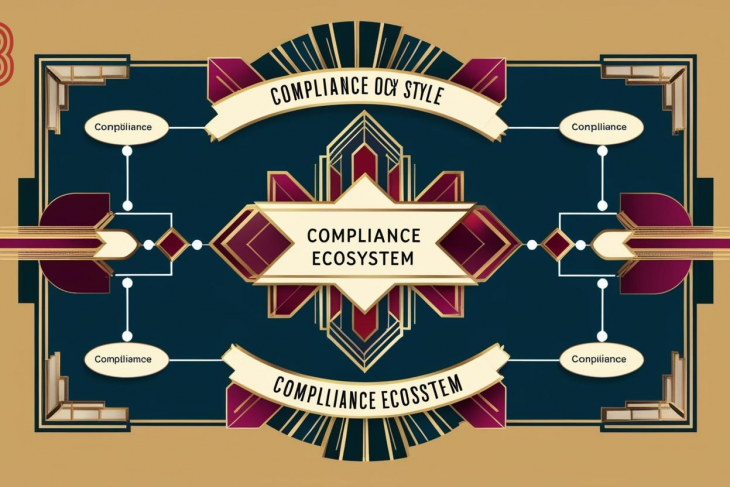
Introduction
In an era of rapid digital transformation, cyber threats have become a pervasive risk affecting all sectors of the global economy. From multinational corporations to small and medium enterprises (SMEs), the integrity, confidentiality, and availability of data and information systems have emerged as core assets that demand protection. As organizations digitize operations and embrace technologies such as cloud computing, artificial intelligence, and the Internet of Things (IoT), their exposure to cyber threats increases exponentially. Consequently, cyber risk resilience is no longer a technical issue but a fundamental component of business risk management.
Cyber risk resilience refers to an organization’s ability to prepare for, respond to, and recover from cyber incidents. It encompasses a proactive and adaptive approach that ensures continuity, minimizes disruption, and preserves trust with stakeholders.
The Strategic Importance of Cyber Risk Resilience
Evolution of the Threat Landscape
Cyber threats have evolved from isolated malware attacks to complex, state-sponsored cyber espionage, ransomware-as-a-service (RaaS), and supply chain compromises. The increasing frequency and sophistication of these attacks—exemplified by incidents such as the SolarWinds breach and the Colonial Pipeline ransomware attack—highlight the inadequacy of traditional perimeter-based defenses.
Business Impacts of Cyber Incidents
Cyber incidents can inflict substantial financial, operational, legal, and reputational damage. According to IBM’s 2024 Cost of a Data Breach Report, the average cost of a breach reached $4.45 million globally. Beyond direct costs, organizations may face prolonged downtime, loss of customer trust, regulatory fines, and long-term brand erosion. As a result, cyber resilience is not merely a defensive posture but a strategic business imperative that ensures sustainable performance in a volatile digital environment.
Foundations of Cyber Risk Resilience
Cyber risk resilience is a multi-disciplinary endeavor grounded in key principles:
Preparedness: Anticipating threats and establishing preventive controls.
Response: Rapid detection and containment of threats.
Recovery: Restoring operations and minimizing downtime.
Adaptability: Learning from incidents and continuously improving systems.
These principles are embedded within broader risk management frameworks that align cybersecurity with enterprise goals.
Cyber Risk in the Enterprise Risk Management (ERM) Framework
Enterprise Risk Management (ERM) is a structured approach to identifying, assessing, and responding to all forms of risk—financial, operational, strategic, and compliance-related. Integrating cyber risk into the ERM framework ensures that it receives the same level of oversight and strategic alignment as other critical risks.
Key Components
Risk Identification: Involves mapping digital assets, evaluating external and internal threat vectors, and understanding interdependencies.
Risk Assessment: Uses qualitative and quantitative methods to evaluate the likelihood and impact of cyber incidents.
Risk Mitigation: Implements controls, both technical (e.g., firewalls, encryption) and administrative (e.g., policies, training).
Risk Monitoring: Continuously monitors indicators and updates assessments in response to a changing threat environment.
Board-Level Oversight
Boards and senior executives play a pivotal role in fostering cyber resilience. A mature ERM framework promotes accountability by integrating cybersecurity KPIs into enterprise dashboards and strategic planning.
Building Blocks of Cyber Resilience
1. Governance and Leadership
Effective governance is foundational. Organizations must establish cybersecurity governance structures that define roles, responsibilities, and reporting lines. Key elements include:
Cybersecurity Committees: Dedicated teams overseeing cyber risk strategy.
Chief Information Security Officer (CISO): A key executive leader who bridges IT and business objectives.
Policy Frameworks: Organizational policies covering data protection, incident response, and user behavior.
2. Risk Culture and Awareness
Human error remains a leading cause of cyber incidents. Promoting a culture of cyber awareness is essential. This includes:
Security Awareness Training: Regular programs tailored to employee roles.
Phishing Simulations: Exercises to gauge and improve employee vigilance.
Whistleblower Channels: Mechanisms to report suspicious activity confidentially.
3. Technology and Architecture
Technology is both a risk vector and a defense mechanism. Cyber-resilient organizations leverage:
Zero Trust Architecture: Assumes no implicit trust and verifies every access request.
Security Information and Event Management (SIEM): Centralized tools for threat detection and incident response.
Endpoint Detection and Response (EDR): Advanced capabilities to detect and mitigate threats on user devices.
Cloud Security Posture Management (CSPM): Ensures secure configurations in cloud environments.
Incident Response and Crisis Management
A robust Incident Response Plan (IRP) is critical for resilience. It outlines predefined procedures to detect, contain, eradicate, and recover from cyber events.
Phases of Incident Response
Preparation: Includes establishing response teams, playbooks, and communication protocols.
Detection and Analysis: Involves real-time monitoring and forensic analysis.
Containment and Eradication: Aims to limit damage and remove threats.
Recovery: Focuses on restoring systems and validating integrity.
Post-Incident Review: Captures lessons learned and updates policies.
Crisis Communications
Managing stakeholder communications during a cyber crisis is vital. Transparency, timely updates, and coordinated messaging reduce panic and preserve trust with customers, investors, regulators, and partners.
Regulatory and Compliance Considerations
Cyber risk management is increasingly shaped by regulatory obligations. Organizations must comply with a growing body of cyber laws and standards, including:
General Data Protection Regulation (GDPR): Requires data breach notification within 72 hours.
NIST Cybersecurity Framework: A voluntary framework offering guidelines for improving cyber resilience.
ISO/IEC 27001: An international standard for Information Security Management Systems (ISMS).
SEC Cyber Disclosure Rules: U.S. regulations mandating disclosure of material cyber risks and incidents.
Non-compliance can result in severe penalties and reputational fallout. Cyber resilience, therefore, aligns with legal due diligence and corporate accountability.
Cyber Risk Quantification and Insurance
Quantifying cyber risk is a challenging but necessary step for resilience. Organizations use models such as FAIR (Factor Analysis of Information Risk) to estimate potential losses.
Cyber Insurance
Cyber insurance is an increasingly adopted risk transfer mechanism. Policies typically cover:
Data breach costs
Business interruption
Legal liabilities
Ransomware payments
However, insurers demand robust security postures, and premiums are influenced by an organization’s cyber maturity.
Supply Chain and Third-Party Risk Management
Many breaches originate from third parties. Managing supply chain cyber risk includes:
Vendor Risk Assessments: Evaluate cybersecurity maturity of suppliers and partners.
Contractual Controls: Include security obligations and incident notification clauses.
Continuous Monitoring: Leverage threat intelligence to monitor vendor behavior.
Resilience extends beyond internal defenses to encompass the entire digital ecosystem.
Cyber Resilience Metrics and KPIs
To measure and improve cyber resilience, organizations must define relevant metrics, such as:
Mean Time to Detect (MTTD) and Mean Time to Respond (MTTR)
Patch Management Effectiveness
Phishing Click-Through Rates
Compliance Audit Scores
Backup Recovery Success Rate
Dashboards and executive reports convert these metrics into actionable insights.
Integration with Business Continuity and Disaster Recovery
Cyber resilience aligns closely with business continuity (BC) and disaster recovery (DR) planning. A cyber incident is a business disruption event that must be addressed within continuity strategies. Key synergies include:
Data Backups and Redundancy: Ensure recoverability of critical systems.
Failover Systems: Minimize downtime through alternate infrastructure.
Crisis Response Teams: Coordinate between cyber, legal, communications, and operations units.
Case Studies in Cyber Resilience
Maersk (2017)
The shipping giant suffered a massive ransomware attack (NotPetya), paralyzing operations. Despite significant disruption, Maersk restored systems in ten days using clean backups and crisis leadership, showcasing the importance of recovery planning.
Norsk Hydro (2019)
A ransomware attack forced the aluminum producer to switch to manual operations. Transparency in communication and resilience planning enabled the company to resume production quickly and maintain public trust.
These examples highlight that while breaches are often inevitable, resilience defines outcomes.
The Future of Cyber Resilience
AI and Automation
Artificial Intelligence (AI) is transforming cyber resilience. AI-driven tools can detect anomalies, automate response actions, and predict threats. However, adversaries also use AI, making it a dual-edged sword.
Quantum Computing
Quantum advances threaten to render current encryption obsolete. Preparing for a post-quantum world through quantum-resistant algorithms is crucial for long-term resilience.
Digital Twin Security Models
Digital twins—virtual replicas of IT environments—allow organizations to simulate attacks and assess defenses before real-world deployment, enhancing preparedness.
Summary
Cyber risk resilience is the cornerstone of sustainable business in a digital age. It demands strategic alignment, robust governance, advanced technology, and a proactive culture of vigilance. As threats grow more sophisticated, organizations must evolve from reactive cybersecurity to dynamic cyber resilience—integrating threat anticipation, real-time response, and rapid recovery into the DNA of enterprise risk management.
Cyber resilience is not only about safeguarding systems; it’s about preserving trust, protecting value, and enabling innovation in a world where digital risks are inextricably linked to business survival.




















